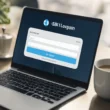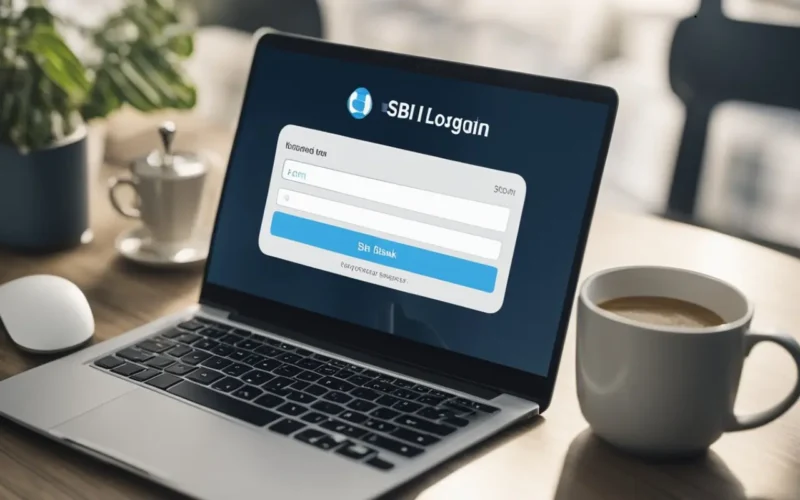Key Takeaways
- SBI provides a secure, OTP-based login for online access.
- Users should review security tips before logging in.
- Regular updates and cautious practices help maintain online security.
SBI, or the State Bank of India, offers a robust online banking experience for its users. The convenience of managing finances from anywhere at any time makes it essential to know how to log into your SBI account successfully. To access your SBI account, use their official web portal with an OTP-based login for added security. This step is crucial to protect your sensitive financial information from unauthorized access.
Navigating the SBI portal can be straightforward with the right guidance, providing complete control over one’s personal banking needs. Before logging in, it’s advisable to review the security tips and phishing alerts provided by SBI to stay informed about potential threats. SBI’s internet banking services offer several features that make banking simpler and more accessible for its customers.
Security remains a top priority for SBI, and they ensure that their online banking platform is equipped with necessary precautions. Customers are reminded to regularly update their passwords and be cautious of any suspicious activities on their accounts. This ensures that personal data remains private and secure, giving users peace of mind as they manage their finances online.
Accessing Your SBI Account Online
Online banking with SBI offers users a convenient way to manage their bank accounts without visiting a branch. With OnlineSBI, users can securely conduct transactions from their homes. This guide will cover how to access SBI accounts online and address common login issues one might face.
Steps to SBI Bank Login
To access an SBI account online, customers should visit the OnlineSBI website. Login requires a user name and password. Users must enter their User Name and Password in the designated fields.
A Captcha is used for security. This might be an image or an audio captcha. Completing this correctly is important to proceed. For new users, registration involves receiving a User ID and Password from their branch.
For those logging in for the first time, it is crucial that they change their password to ensure account security. Remember to always keep login credentials confidential and avoid entering them on untrusted sites.
Check out: SBI Bank IFSC Code
Common Login Issues and Solutions
Users might encounter difficulties when accessing their accounts online. One common problem is forgetting the password. In such cases, SBI provides an option to reset the password. It involves receiving an OTP on the registered phone number.
Another issue could be entering incorrect Captcha. Users should ensure that they type the characters carefully. If audio captcha is used, it may provide assistance for better clarity.
Sometimes, accounts might get locked due to multiple incorrect login attempts. In such instances, waiting for a while or contacting SBI customer support can help in unlocking the account. Always ensure a stable internet connection to prevent login disruptions.
Maintaining Security and Privacy
Ensuring the security and privacy of personal data is a crucial part of online banking. SBI Bank offers measures to protect against threats and handle sensitive information safely, while also providing guidance on reporting incidents like phishing attempts or fraudulent activities.
Understanding Online Threats
Online banking users face various threats, including phishing attacks, where fraudsters attempt to obtain personal information using fake emails or websites. These attacks can lead to unauthorized access if not identified early.
Malware is another common threat used to steal credentials or damage systems. Users should be cautious when opening emails and avoid downloading attachments from unknown sources.
Bank websites typically use secure protocols like SSL certificates, providing encrypted communication to prevent data interception. 128-bit encryption ensures that data remains confidential during transmission, offering users peace of mind.

Safeguarding Your Confidential Information
Maintaining confidentiality involves protecting user credentials such as passwords and PINs. Both Phishing and other forms of fraud attempt to trick users into revealing this information.
Users should never share passwords or one-time passwords (OTPs) by phone or email. Extended Validation Standard certificates are used by banks to assure users of the site’s legitimacy, allowing them to verify that the site is genuine.
SBI advises against responding to suspicious phone calls or emails that ask for personal details. Regularly updating passwords and using strong, unique combinations is essential for user access management.
Reporting Security Breaches
Prompt reporting of security breaches can prevent further damage. Users should know how to report phishing attempts or suspicious activity to SBI, ensuring swift action.
Banks often provide helplines or online forms to report incidents quickly. Understanding what information to include when reporting issues can enhance the bank’s ability to respond effectively.
Users must stay alert and monitor their accounts for unauthorized transactions. Immediate reporting helps protect not just individual accounts but also contributes to overall online security efforts.
FURTHER READING










